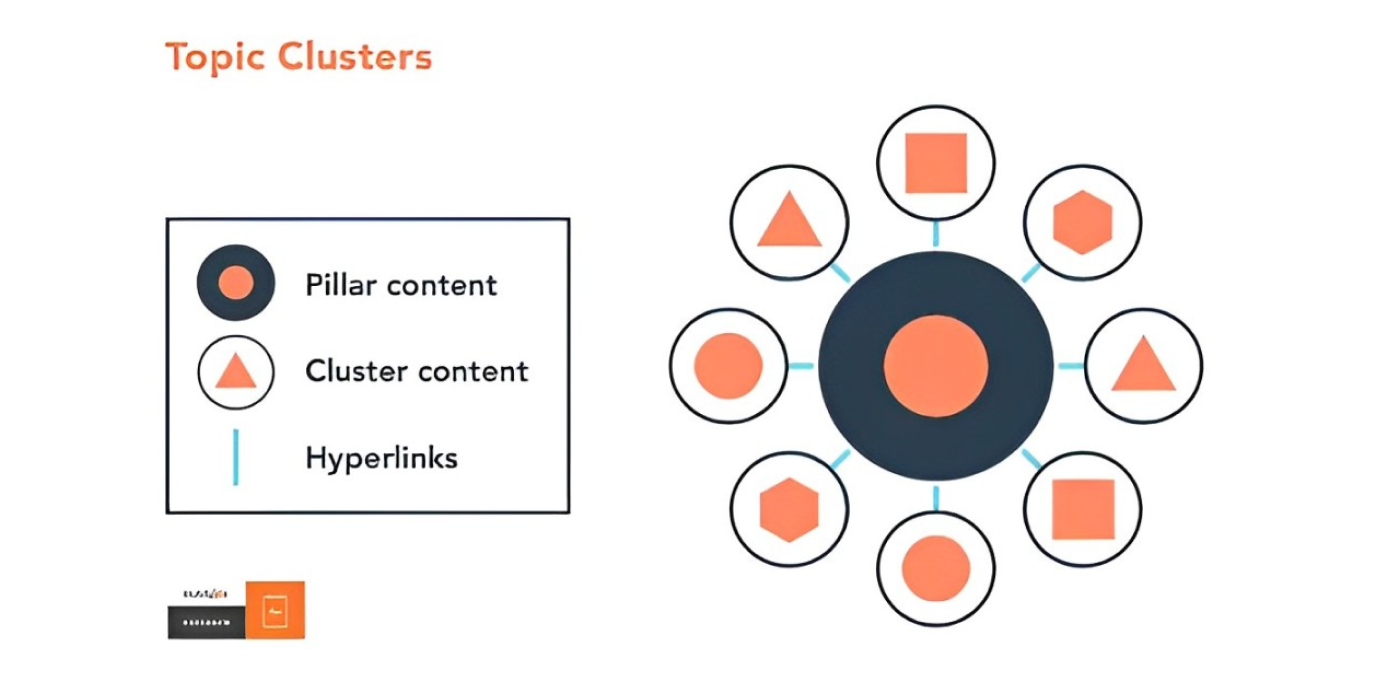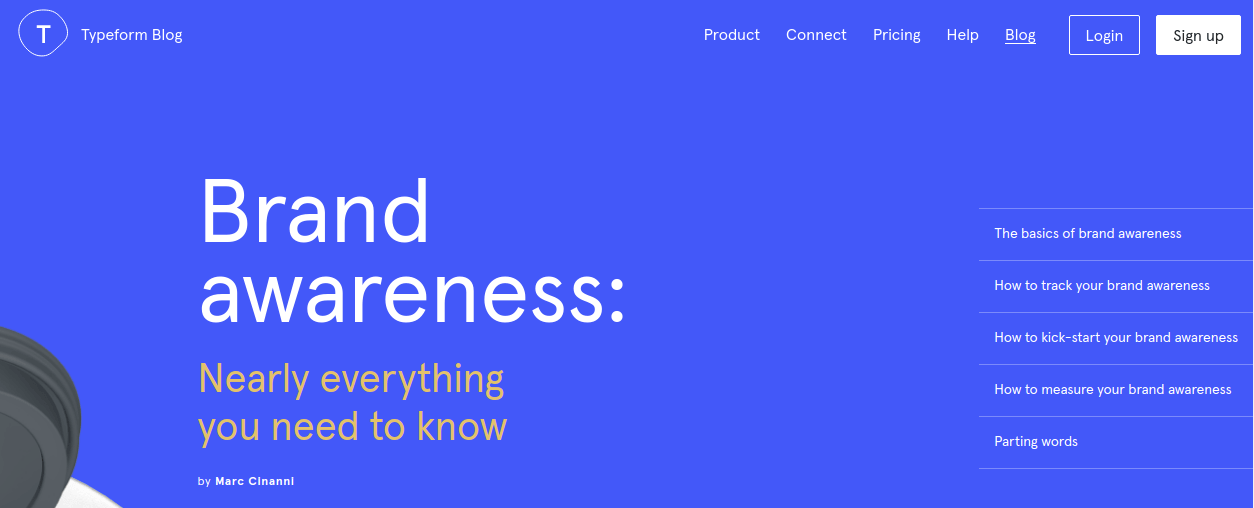What is a ‘Pillar Page’ and why Google loves it?
The way people search for content on the web has evolved than how they did decades ago. Today, the queries they search for on search engines usually consists of more than 4 words to get an exact answer and is based more on its context than the traditional keywords.And search engines like Google, to provide the best user experience, have also evolved to cater exactly to these long-form search queries. It’s really not about keywords anymore.Then what’s it about?It’s about topics. And Google too gives more weight to the topics you address in your blogs and web pages than the keywords you target.All of this has given to rise to the concept of ‘Pillar Pages’ and how they serve both the purposes of Google and searchers. They fulfill the purpose of searchers searching for that content as it provides all the information there is about a query on a single page. And that’s what search engines want, to fulfill the queries of their users in the most seamless way possible to deliver a good user experience.
But what exactly is a ‘Pillar Page’?
Pillar page is a type of long-form content that provides all the information there is about a topic broadly. And if a reader wants to consume more information about a particular sub-topic present in the pillar page, he would be redirected to a different page where all the in-depth information about that particular sub-topic will be presented to him. That part is taken care of by ‘topic clusters’. The main characteristic of a Pillar Page is that it’s closely linked to the topic clusters with the help of hyperlinks. For example - if a searcher wants to learn about ‘content marketing’, then the pillar page based on a broad topic like ‘content marketing’ would mention every major element that forms content marketing in general i.e. blogging, content outreach, influencer marketing etc. and would link each and every sub-topic with further reading materials that explains in detail each sub-topic to satisfy the searchers, creating a well-devised structure for your pillar page.
How do I create a ‘Pillar Page’?
Creating a Pillar Page is not hard. You just have to choose a topic broad enough so that you can write more in-depth articles about its sub-topics (topic clusters) which will link back to the pillar page to increase its overall authority.Here’s how to do it -
Choose a broad topic
Based on audience research, you’ll have to choose a broad enough topic which includes various keyword related sub-topics to so that you can create your topic clusters around it later. Like mentioned above, we’ll take content marketing as an example.
Writing the sub-topics
So, you’ve selected a broad topic for your pillar page (content marketing, in this case), the next part is filling your pillar page with keyword focused sub-topics. The sub-topics of a pillar page just briefly explain what the sub-topic is about. Your blogs or topic clusters that you’ll write later will fulfill the purpose of providing in-depth information about the chosen sub-topics.In this case, the sub-topics for the content marketing pillar page would be blogging, influencer marketing, infographics, and the likes.
Writing the topic clusters
Then you would write a bunch of blogs containing specific, in-depth information about the sub-topics of your pillar page and all the blogs would be interlinked to those sub-topics and the sub-topics would link to those various blogs forming your topic clusters. Say, you want to target the sub-topic ‘blogging’, to do that, you’d create blogs having in-depth information about the best blogging practices, how to find the right topics for your blogs, where to market your blogs and everything else related to blogging and all those blogs would link-back to the sub-topic creating a well-thought-out interlinking structure.
Best practices of creating a ‘Pillar Page’
Now that you know what a pillar page is and how to make one, here are some things that you need to take care of to create a pillar page that would really make a difference to your overall website authority -
Creating a structure
 Source The sole purpose of creating pillar pages is to structure all your content about a topic in a well-organized way so that users can make sense of the information easily. So, don’t forget to carefully interlink all your topic clusters to the pillar page and vise-versa.
Source The sole purpose of creating pillar pages is to structure all your content about a topic in a well-organized way so that users can make sense of the information easily. So, don’t forget to carefully interlink all your topic clusters to the pillar page and vise-versa.
Keep it ungated
 Source Pillar pages are one-stop destinations for your audience to gain deep insights about a topic, don’t treat it as a lead generator and ask for email addresses to gain full access to it. You’ll be limiting its potential that way. Instead, you can simply provide a downloadable option of your pillar page along with the full content so that users can keep it handy if they wish to read it later when they have time.
Source Pillar pages are one-stop destinations for your audience to gain deep insights about a topic, don’t treat it as a lead generator and ask for email addresses to gain full access to it. You’ll be limiting its potential that way. Instead, you can simply provide a downloadable option of your pillar page along with the full content so that users can keep it handy if they wish to read it later when they have time.
Provide a table of contents
 Source This one is important, as pillar pages usually consist of a lot of words and sub-topics, providing an option to your readers to quickly jump onto the sub-topic they are most interested in can work wonders for the user experience your pillar page provides. And when it comes to creating pillar pages, its all about providing a great user experience.
Source This one is important, as pillar pages usually consist of a lot of words and sub-topics, providing an option to your readers to quickly jump onto the sub-topic they are most interested in can work wonders for the user experience your pillar page provides. And when it comes to creating pillar pages, its all about providing a great user experience.
Why Google absolutely loves them?
Google absolutely adores pillar pages for a lot of reasons. One main reason is that they are super easy for their crawlers to make sense of and crawl because of their semantically related closely interlinked content structure. The other main reason is that pillar pages provide great user experiences to users because of their ease of navigation and closely related content which can provide all the desired relevant information to a user about a particular topic and Google cares about the user experience every webpage provides to their searchers. So, they automatically rank higher than normal pages of content found on the web. ‘Pillar Pages’ and ‘Topic clusters’ have become buzzwords for all things SEO lately and you shouldn’t wait much before jumping on the wagon. As an example, Hubspot has created a great pillar page on ‘Youtube Marketing’ which currently ranks first for the keyword on Google’s SERPs among nearly 2.5 billion results! Have a look at that pillar page and you’ll understand in an instant what we are talking about. Do let us know if you were able to find their cleverly inserted internal links that redirect readers to more relevant information about the sub-topic through their topic clusters.
Drive Exceptional Growth without an In-House Marketing Team
We drive business growth by optimizing every inbound channel to attract and convert high-quality clients for you
Share with Friends
Get The Ultimate Marketing Toolkit
100+ Tools on SEO, Google Ads, Meta Ads, Social Media, Viral Marketing, CRO, and more.
Free DownloadSubscribe to our newsletter
Get fresh stories, case studies, and
advice
from successful creators and industry experts.

Subscribe now

Get The Ultimate Marketing Toolkit
100+ Tools on SEO, Google Ads, Meta Ads, Social Media, Viral Marketing, CRO, and more.
Free Download







